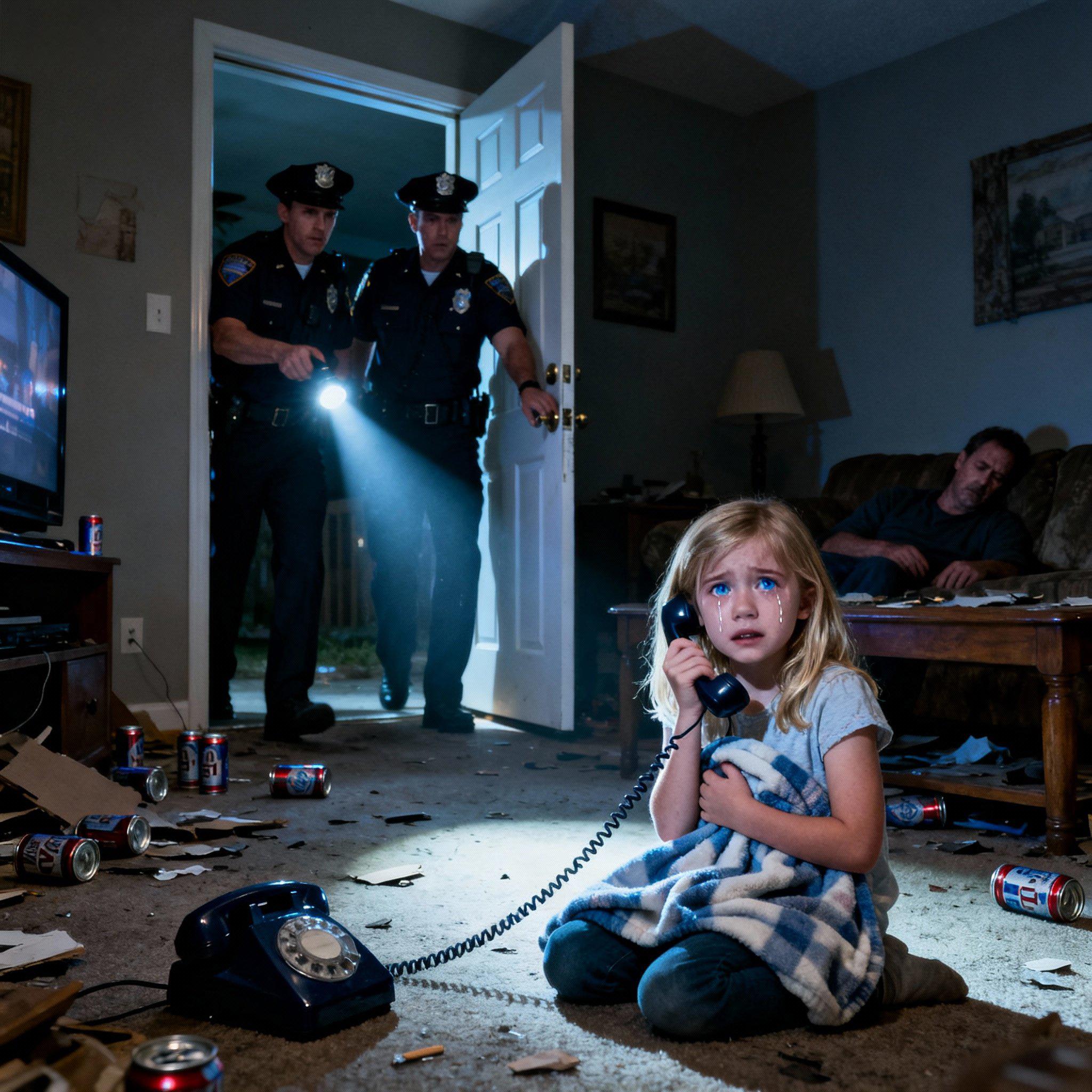At precisely 6:42 p.m. on an otherwise quiet Wednesday evening in rural Ohio, 911 dispatcher Anna Meyers answered a call that would forever change the lives of everyone involved. On the other end of the line was a terrified little girl, her voice trembling as she sobbed so uncontrollably that words barely escaped her lips. “Please help me,” she pleaded between tears. “Daddy’s snake is so big—it hurts so much!”
At first, Anna assumed the call was about a dangerous pet, maybe a snake that had bitten the child or was threatening the household. Without hesitation, she dispatched officers immediately. Within minutes, Officers David Ross and Michael Jensen arrived at a small, rundown house located at the very edge of the quiet town. The front door was ajar, creaking slightly in the soft breeze. The thick stench of stale alcohol hung heavy in the air, invading their senses before they even stepped inside.
The living room was a chaotic mess — empty beer cans strewn across the floor, dirty dishes piled high in the sink, broken furniture scattered in every corner. The atmosphere felt heavy, as if the house itself carried secrets too dark to voice. Somewhere from the back of the house, soft, almost inaudible crying could be heard.
Following the sound, the officers entered a dimly lit bedroom. There, huddled on the cold floor, was seven-year-old Emily Carter. She clutched a torn blanket tightly around her frail frame, her small face pale and streaked with tears. Bruises marked her arms and legs — some fresh, others faded like painful memories. Across from her, Charles Carter, her father, slumped on a battered couch, clearly intoxicated. Not a single snake was visible anywhere in the room.
Officer Jensen knelt beside Emily, gently asking where the snake was. Her trembling lips barely formed the words, but the truth emerged — the “snake” wasn’t an animal at all. It was the terrifying nickname her father used for something far darker and far more sinister.
The realization hit the officers like a blow to the chest. This was no ordinary emergency call. This little girl’s desperate plea was a silent cry for rescue from years of abuse and pain.
Without hesitation, Charles was arrested on the spot. Paramedics quickly took Emily to the hospital, where doctors and social workers began assessing her condition. Every touch made her flinch. Her tiny body was a canvas of suffering, covered in bruises and scars of different ages — vivid proof of the torment she had endured. Detective Sarah Dalton from the Child Protection Unit arrived promptly to take Emily’s statement. Speaking in broken sentences, Emily shared pieces of her story: how her mother had left long ago, how her father drank every night, and how “bad things happened” when he became angry.
Investigators conducted a thorough search of the home, uncovering further evidence that confirmed the little girl’s harrowing account. Prosecutors wasted no time, filing multiple charges including aggravated assault, child endangerment, and exploitation. In the interrogation room, Charles attempted to deny the allegations, claiming misunderstandings and accusing his daughter of fabricating stories. But confronted with overwhelming evidence, his arrogance crumbled into fear and silence.
News of the arrest spread like wildfire throughout the small town. Neighbors who once exchanged friendly greetings now cast uneasy glances at the boarded-up house on Maple Street — a grim reminder of the horrors hidden behind its walls.
Meanwhile, Emily was placed in protective foster care, with a compassionate family specially trained to support children recovering from trauma. Margaret Lewis, her foster mother, stood by her side through every nightmare and tearful outburst. Each night she whispered comforting words, “You’re safe now, sweetheart. Nobody can hurt you anymore.”
With time and patience, therapy helped Emily reclaim her voice and begin healing. She rediscovered her love for drawing — filling pages with bright flowers, shining suns, and sometimes police badges, symbols of hope and safety. The officers who rescued her visited occasionally, reminding her that despite the darkness she endured, good people still existed in the world.
Three months later, Charles Carter’s trial commenced. The courtroom was hushed as prosecutors played the chilling 911 call that had exposed the painful truth. Experts testified about the signs and long-term effects of child abuse. When Emily bravely took the stand, her voice was calm and clear. “I told the truth because I didn’t want to be scared anymore,” she said softly, her eyes meeting those of the jury.
After only five hours of deliberation, the jury reached a unanimous verdict: guilty on all charges. Charles Carter was sentenced to life in prison without the possibility of parole.
Emily, now permanently living with the Lewis family, slowly began to smile again. She excelled at school, poured her heart into her drawings, and confided to her foster mother her dream of becoming a police officer — “just like the ones who saved me.”
One single 911 call had uncovered years of hidden pain, but more importantly, it saved a little girl’s life. And though the story began with fear and suffering, it ended with courage, justice, and the quiet strength of a child who found her voice when it mattered most.
